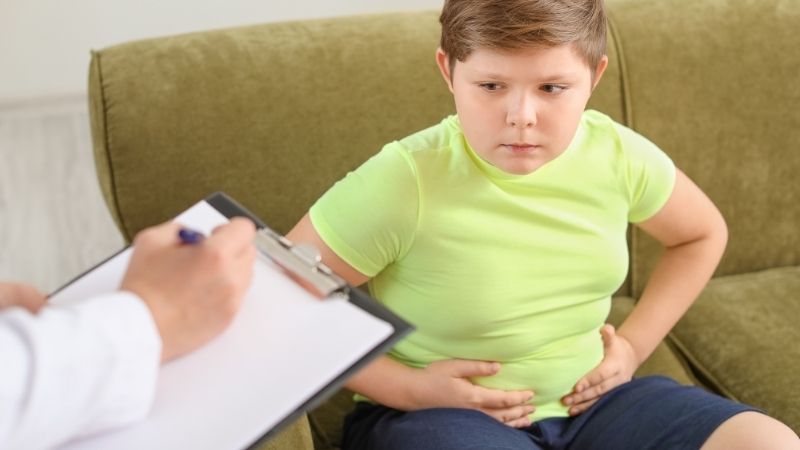Obesity rates have a startling effect on a population’s overall health, and the effects don’t start in adulthood. According to the CDC, nearly 20% of American children were obese, and the health risks and lifestyles of these children continue throughout their lives.
One thing to keep in mind about childhood obesity is the first word in the term: childhood. Children are not able to make complex decisions for themselves, and they are often subject to the lifestyles imposed on them by the adults in their lives.
That means they need help. Most children act and behave in the manner modeled for them, and react to the changes around them.
Causes of Childhood Obesity
Like many health issues, childhood obesity is the result of a number of factors, few of which can be discussed or examined in a vacuum. All the studies point to some key indicators causing childhood obesity: sedentary lifestyles (watching TV and playing video games, for example); poor diet; and lack of education. To the latter points, the CDC has seen that obesity among children is highest in low-income families and in families with low education levels.
But that doesn’t mean that parents going back to college will cure their children of obesity. Nore does it mean that simply making more money will solve the issues. Rather, the problem comes down to a complex mesh of factors that contribute, each in their own ways, to childhood obesity.
When people have less income, they tend not to be able to afford healthier foods. And when people have to work longer hours for lower wages, they don’t have the time or resources to cook healthy meals at home. Both of these combine to mean more fast-food for lower-income families, and more processed food when cooked at home.
Lower levels of education tend to result in families not having high-wage jobs, which contributes to the factors above, but it also means that the adults in the household haven't been exposed to health literature or proper diet information.
Another complicating factor is the behaviors modeled for children. If a family doesn’t have the habits of staying active, exercising, and eating right, then the children won’t adopt those behaviors themselves.

What We Can Do
It’s important to realize that it’s in everyone’s best interest to help ameliorate childhood obesity. Just as it’s important to reduce smoking, and keep everyone wearing seatbelts. That’s because as obese children grow older, they become obese adults, and their health care concerns become stressors on the entire system.
According to one study, excess healthcare costs associated with obesity in America totaled over $172 billion dollars, with over 1 billion of that coming just from children. Addressing this makes sense on a very real, financial level, if nothing else.
It’s always best to try and prevent a health issue, rather than try to fix it after it’s developed. In the case of childhood obesity, as a society we cannot expect to simply raise the education level of all parents, nor can we wave a wand and increase their earning power.
But we can, as a society, increase the level of awareness for all people involved in children’s lives, to better assist them in making better decisions for themselves and for the children.
For instance, according to the National Institutes of Health (NIH), prevention of childhood obesity begins with educating the parents about nutrition before even conceiving the child. Counseling and education are continuing themes in the NIH’s recommendations for prevention.
Next, we can all do better about modeling behavior and encouraging each other to model that behavior. Children will mimic what they see around them, especially what they see from the people they admire most. Having an open dialogue with children, without shaming them or anyone else, about why it’s important to stay active and eat right, and then doing those things ourselves, sets an example that children will follow.
Finally, we can all do better about stimulating our local cities, towns, and neighborhoods to help with access to better and healthier foods. Whether it’s community gardens, low-income-accessible farmer’s markets, or advocating for actual grocery stores on more street corners, we can all help eliminate the food deserts faced by many of our low-income neighbors. Giving children who don’t have a choice where they live better access to fresh food can have a huge impact on long term health.
Practical Tools
If you or someone you know has direct experience with a childhood suffering from obesity, it can be helpful to have a few helpful, practical tools at your disposal. While society has a long way to go, we can also help with the specific children at risk for obesity in our own lives.
Ending It
For as long as there have been people, there have been people struggling with their weight. And just as long there have been children who learn how to live by watching the adults around them.
That means every adult in our modern world can do better about educating the children around us about dieting, eating better, and staying active. It also means if we have children directly in our care, we need to do better about modeling how to stay active and make the right decisions about diet and lifestyle.
Just as the causes seem to be not being active, not eating well, and not knowing how to fix those issues, then also the answers are getting active, eating better, and teaching kids how to do both in their own lives.

